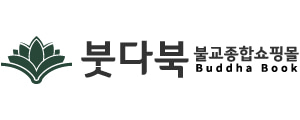Journey to Korean Temples and Templestay
![]()
| 정가 | |
|---|---|
| 판매가 | 품절 |
| 저자/출판사 | 장은화/허원미디어 |
| 적립금 | 540원 (5%) |
| 수량 |   |
| 페이지수 | 229 |
| 발행일 | 2009-07-30 |
| 배송 | |
|---|---|
| 수량 |
|
| 상품 정보 | 가격 | 삭제 |
|---|---|---|
| 총상품금액(수량) 0 | ||
| 상품명 | Journey to Korean Temples and Templestay |
|---|---|
| 정가 | |
| 판매가 | 품절 |
| 저자/출판사 | 장은화/허원미디어 |
| 적립금 | 540원 (5%) |
| 수량 |   |
| 페이지수 | 229 |
| 발행일 | 2009-07-30 |
결제 안내
배송 안내
- 배송 방법 : 택배
- 배송 지역 : 전국지역
- 배송 비용 : 2,500원
- 배송 기간 : 2일 ~ 3일
- 배송 안내 :
교환/반품 안내
환불 안내
신용카드로 결제하신 경우는 신용카드 승인을 취소하여 결제 대금이 청구되지 않게 합니다.
(단, 신용카드 결제일자에 맞추어 대금이 청구 될수 있으면 이경우 익월 신용카드 대금청구시 카드사에서 환급처리됩니다.)
서비스문의 안내
책소개
외국인을 위한 사찰기행과 템플스테이 가이드북
이 책은 우리 문화를 외국인들에게 제대로 알리기 위한 허원미디어 코리아 스토리 시리즈 그 네 번째 책으로, 5부로 구성되어 있다. 1장에서는 한국불교가 중국을 통해 들어와서 어떻게 발전해 왔는지 역사적으로 간단하게 조망하였다. 2장에서는 한국불교의 특징과 우리나라 사찰의 특징을 보여주고 있다. 특별한 사찰인 삼보사찰과 적멸보궁에 대해 잘 설명해 놓았다. 3장에서는 사찰기행을 하면서 느낀 저자의 소회와 자연경관이 어우러져 있다. 한국 절집의 미학을 감상하는 법을 전하고 있다. 4장에서는 외국인 템플스테이를 하는 사찰 26곳을 중심으로 꼭 필요한 정보를 간단하게 전하고 있다. 5장에서는 외국인들이 가장 궁금해하는 우리 불교에 대해 Q&A 형태로 꾸몄다.
저자소개
장은화
현재 동국대학교 불교대학원에서 선불교를 공부하고 있으며, The Korea Times에 사찰기행기를 연재한 바 있다.
Jang Eunhwa completed his B.A. and M.A. in English at Kyunghee University, Seoul. He has led the way in translating English into Korean and teaching English for about twenty years. Currently, he is a Ph.D. candidate in Seon Buddhist studies at Dongguk University, Seoul. Working as a translator of Korean Buddhist literature into English, he is interested in Korean Seon Buddhist practice
목차
Chapter 1 History of Korean Buddhism
1. Overview of Korean Buddhism
2. Three Kingdoms Period
3. Unified Silla Kingdom Period
4. Goryeo Dynasty
5. Joseon Dynasty
6. Japanese Occupation and Recent Developments (Modern Period)
Chapter 2 Korean Buddhist Temples
1. What is the Buddhist Temple?
2. Features of Korean Buddhist Temples
3. Why are Korean Temples Located on the Mountain?
4. Some Special Temples
5. Bhiksu and Bhiksuni of Korean Buddhism
6. Culture of Korean Buddhist Temples
a. Architectural Features of the Buddhist Temple
b. Architectural Elements of the Buddhist Temple
Temple Gates
The One-pillar Gate
The Four Guardians' Gate
The Non-duality Gate
Dharma Hall
Different Buddha Halls and Shrines
Wall Paintings
c. Educational Institutions
Seon Meditation Center (Seonwon)
Vinaya (Monastic Precepts) Seminary (Yulwon)
Monastic Seminary or Sutra School (Gangwon)
Chongrim Temple
d. Monastic Life
Daily Routine
Yearly Routine
e. Korean Buddhist Practice
f. Tradition of Rigorous Seon Practice
g. Temple Etiquette
h. Temple Food
Development of Temple Food
Balu Gongyang, Korean Temple Formal Meal
Chapter 3 Journey to Korean Temples
1. Woljeongsa and Sangwonsa - Home of Manjusuri Bodhisattva
Tale of Woljeong Temple
Tale of King Sejo of Joseon and Sangwon Temple
Temple Stay Program of Woljeong Temple
2. Bongeun Temple
3. Geojo Hermitage
Tale of Arhats 1 Seojin Hermitage, Namwon, North Jeolla Province
Tale of Arhats 2 Arhats and Dongji Patjuk
4. Eunhae Temple
5. Baekheung Hermitage
6. Tongdo Temple 1
7. Tongdo Temple 2
Tale of Tongdo Temple
8. Samhwa Temple
Tale of Samhwa Temple
Temple Stay Program of Samhwa Temple
Chapter 4 Temple Stay
What is the temple stay?
A Typical Temple Stay Program
List of Templestay-running Temples
What is the Temple Life Program?
Temple Life Program of Bongeun Temple
Temple Life Program of Jogye Temple
Temple Life Program of Hwagye Temple
Chapter 5 Buddhism Q&A
1. Why is the Spirit Assembly Altar installed in a temple hall?
2. What are the things held in the hands of Bodhisattvas?
3. Isn't Mahayana Buddhism polytheistic as there are so many Buddhas?
4. What do they mean by the Buddha?
5. Why did Buddhism disappear in the land of origin, India?
6. How is Buddhism different from other religions?
7. Why does Buddhism have so many indigenous factors?
8. Isn't praying before Buddha statues the idol worship?
9. Why do Buddhist monks shave their head?
10. Why does the temple have so many Buddhas?
11. What is Nation-protecting Buddhism and how should we accept it?
12. Why do Buddhist monks give up their home and join the Sangha community?
13. Why had the lotus flower become a symbol of Buddhism?
Appendix
Korean Dynasties
Timelines of Korean Buddhist History



